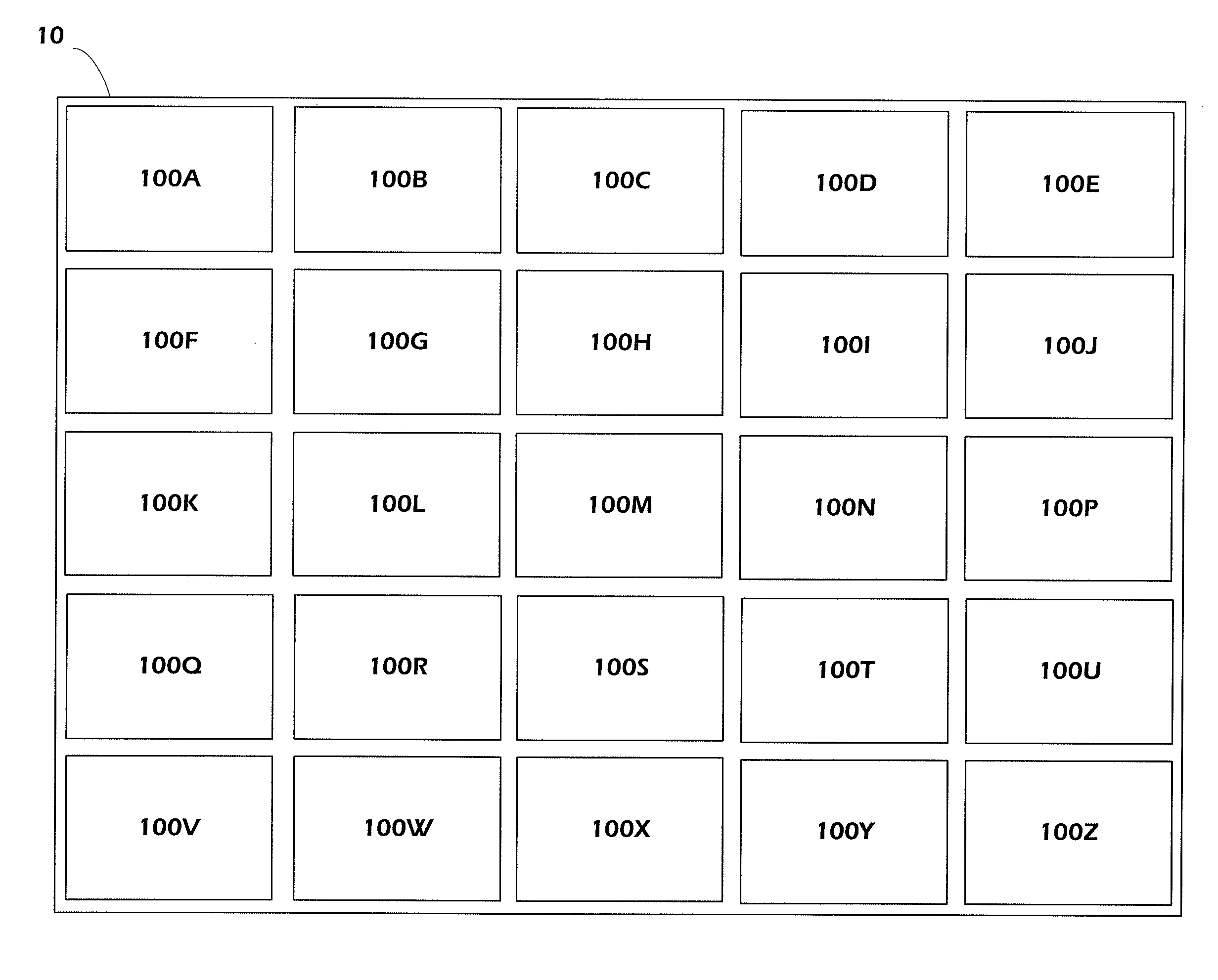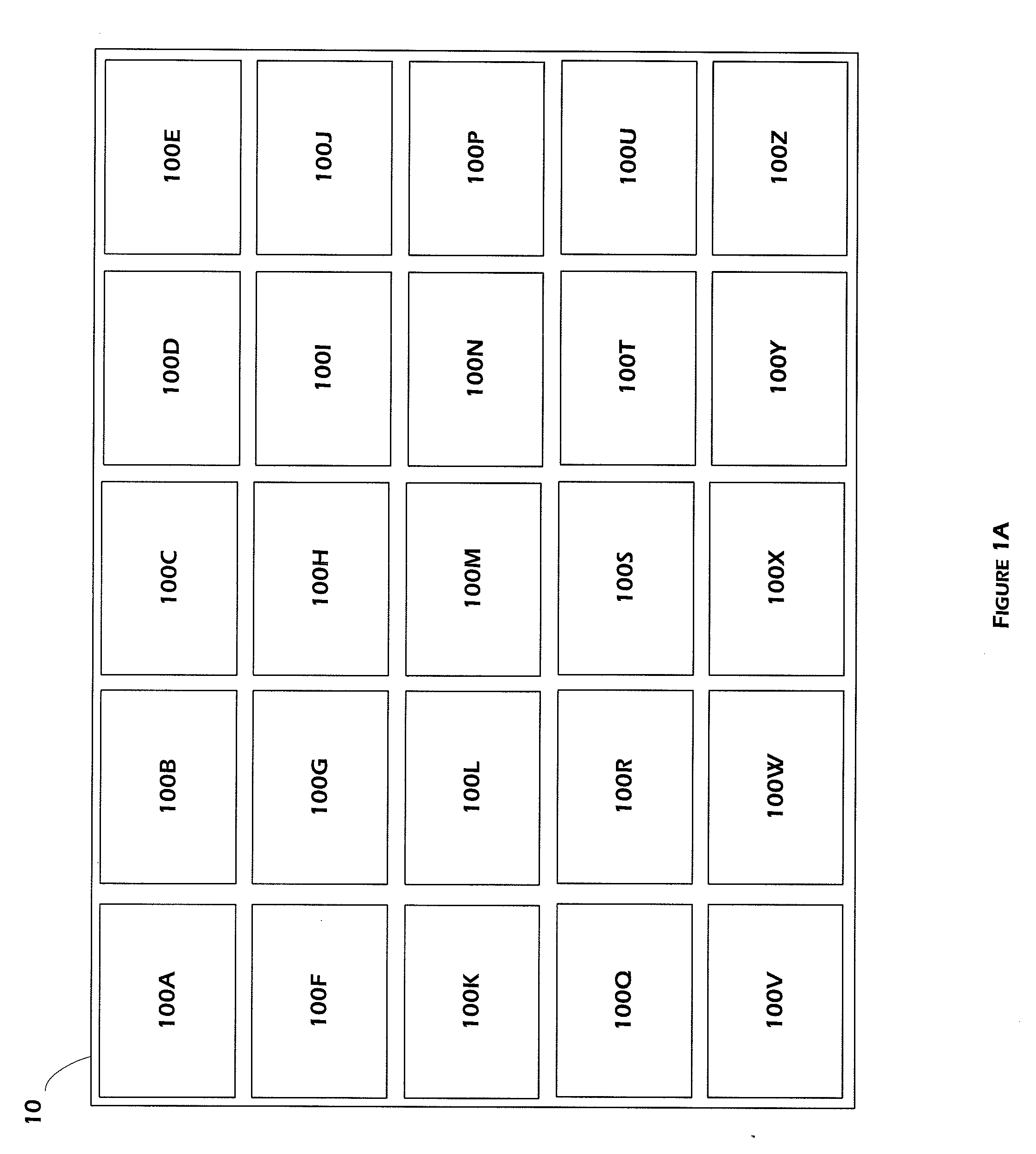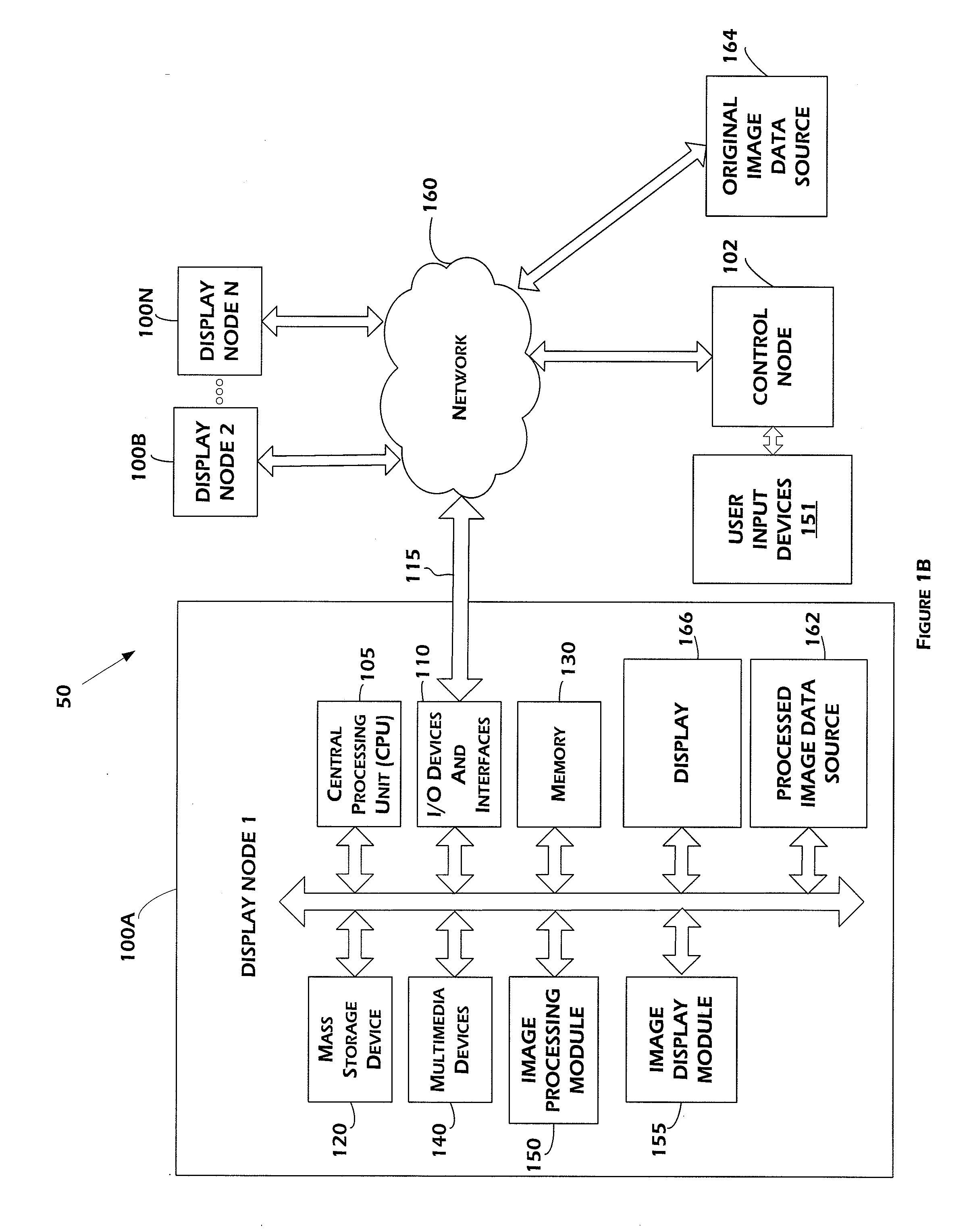Systems, methods, and devices for highly interactive large image display and manipulation on tiled displays
a technology of image display and tiled display, applied in the field of visualization technologies, can solve the problems of prohibitively high load cost of multiple images, and achieve the effects of reducing the amount of data to load, generating the desired view of the image more quickly, and being more responsive and useful system
- Summary
- Abstract
- Description
- Claims
- Application Information
AI Technical Summary
Benefits of technology
Problems solved by technology
Method used
Image
Examples
Embodiment Construction
[0025]The present disclosure generally relates to the interactive display and manipulation of large images or large datasets on an array-type display, such as a tiled display system. In some embodiments, a system that implements a highly interactive large image or parallel display system can be used. In some of the embodiments described below, the interactive tiled display system comprises a high resolution, large format display system configured to render large-scale images or datasets on a large array of display units, or “nodes.” The interactive tiled display system advantageously allows a viewer to see minute, high-resolution detail in the context of a large overall image.
[0026]In some embodiments, the interactive tiled display system allows a user to interact with the display in real-time. For example, embodiments described below can allow panning, zooming, resizing, cropping, rotating, color shading, transparency controlling, and the like of images and / or other content on the ...
PUM
 Login to View More
Login to View More Abstract
Description
Claims
Application Information
 Login to View More
Login to View More - R&D
- Intellectual Property
- Life Sciences
- Materials
- Tech Scout
- Unparalleled Data Quality
- Higher Quality Content
- 60% Fewer Hallucinations
Browse by: Latest US Patents, China's latest patents, Technical Efficacy Thesaurus, Application Domain, Technology Topic, Popular Technical Reports.
© 2025 PatSnap. All rights reserved.Legal|Privacy policy|Modern Slavery Act Transparency Statement|Sitemap|About US| Contact US: help@patsnap.com



